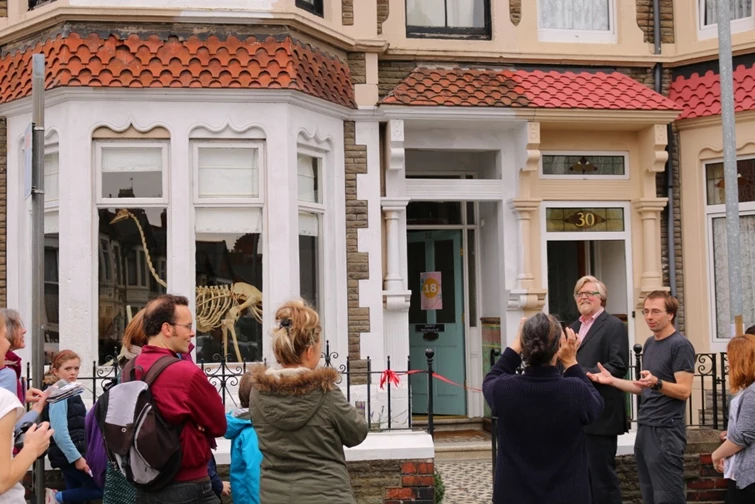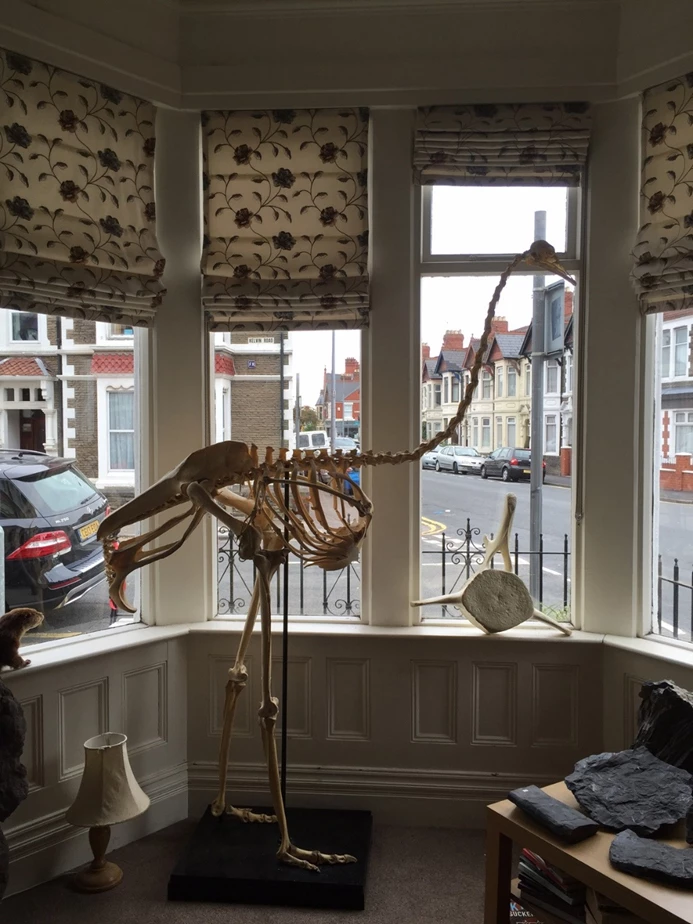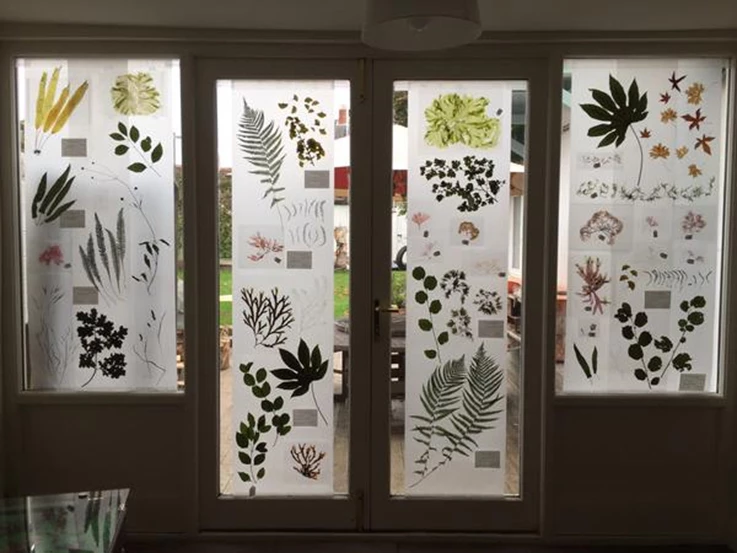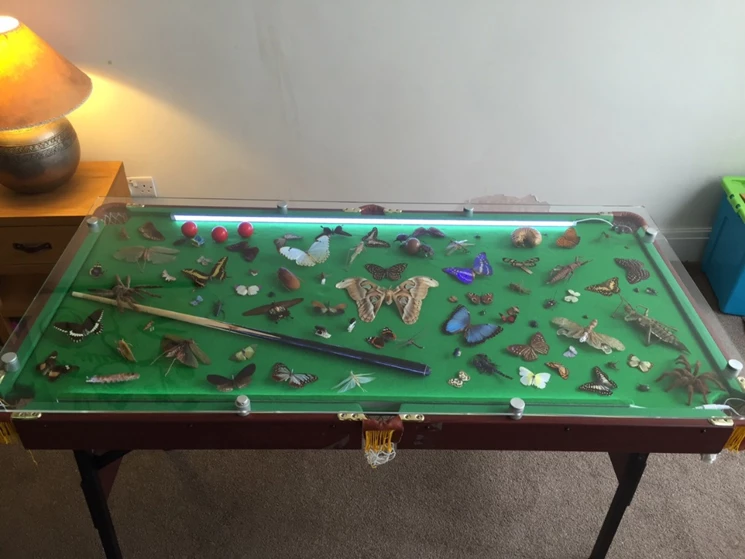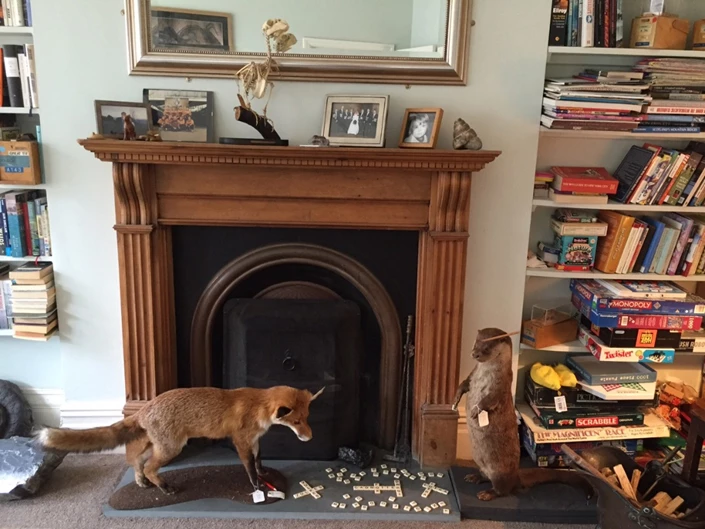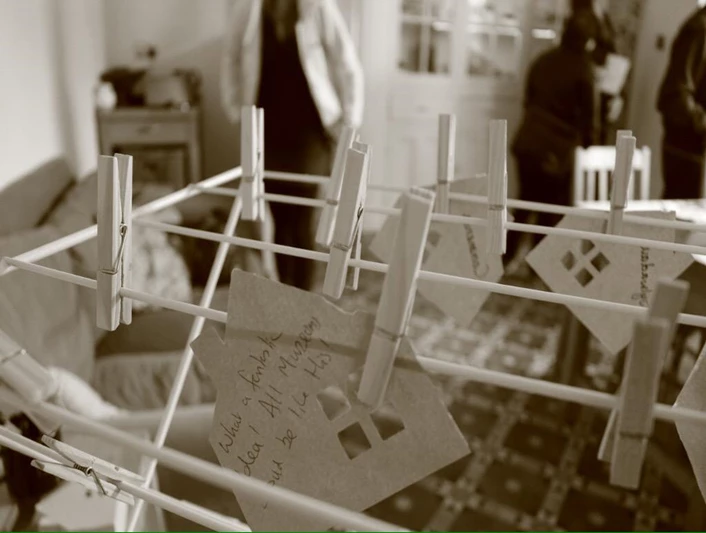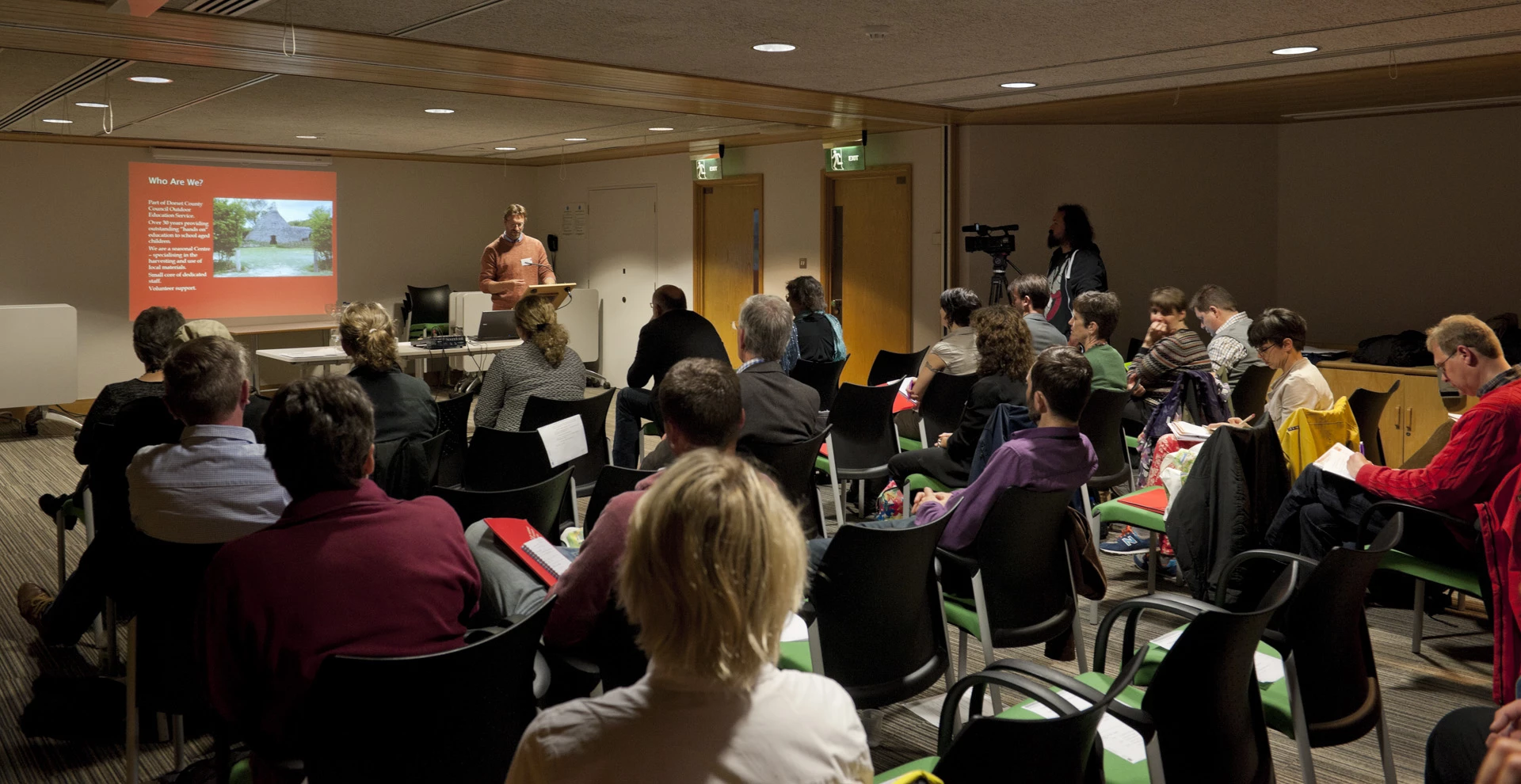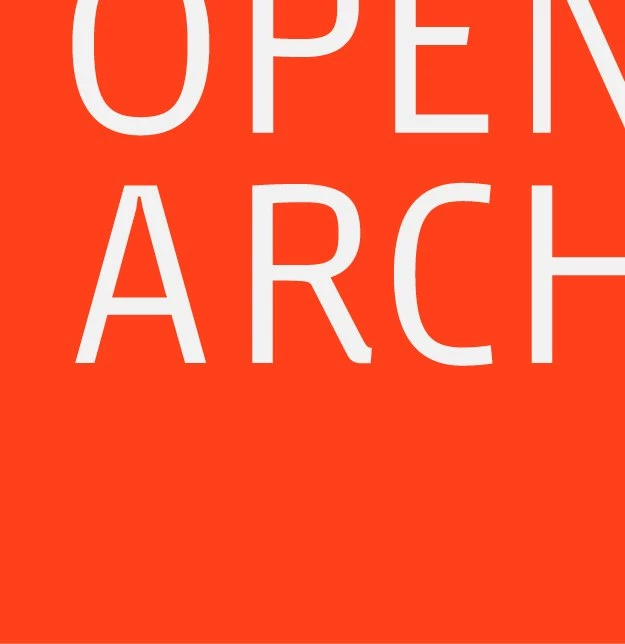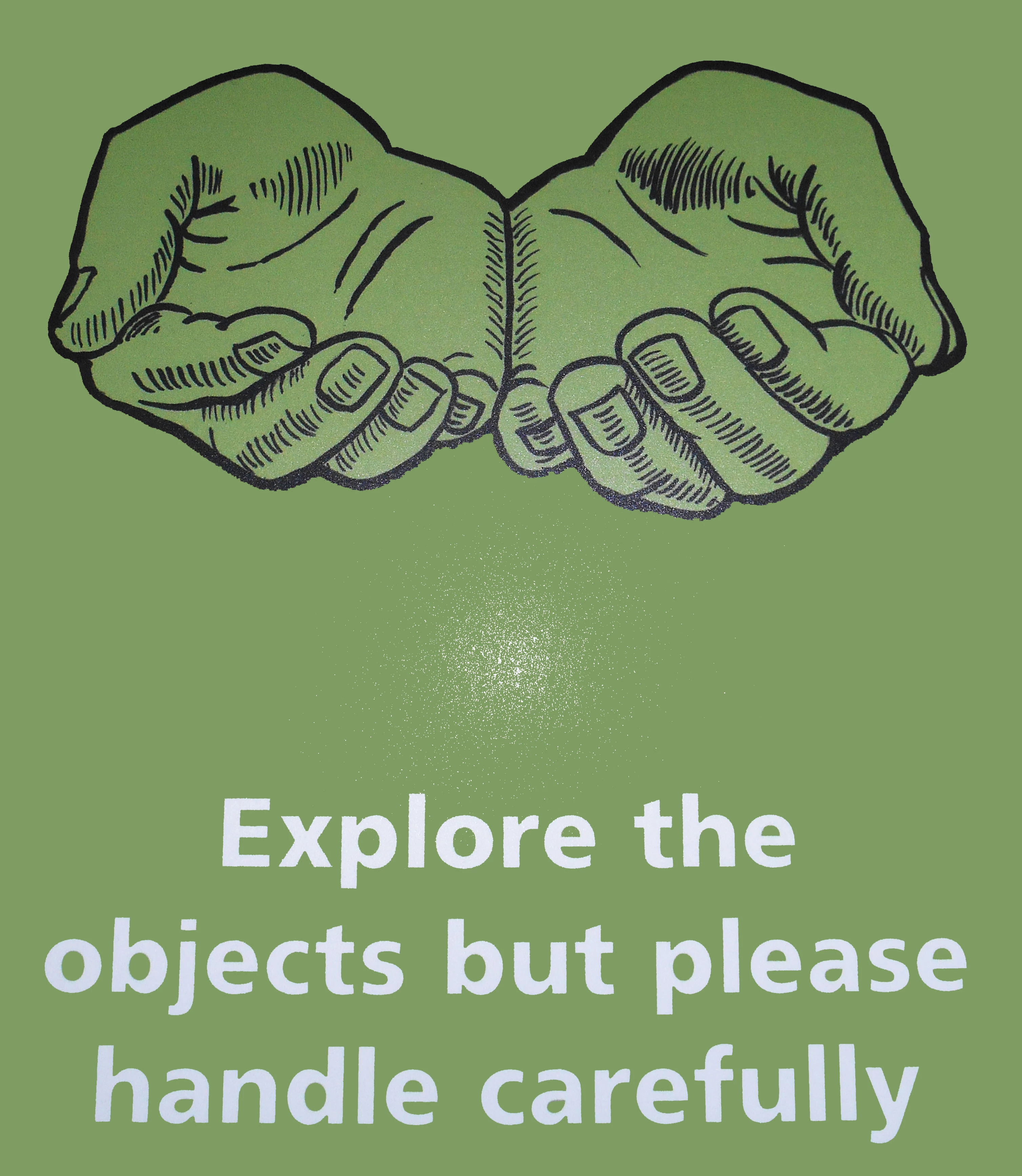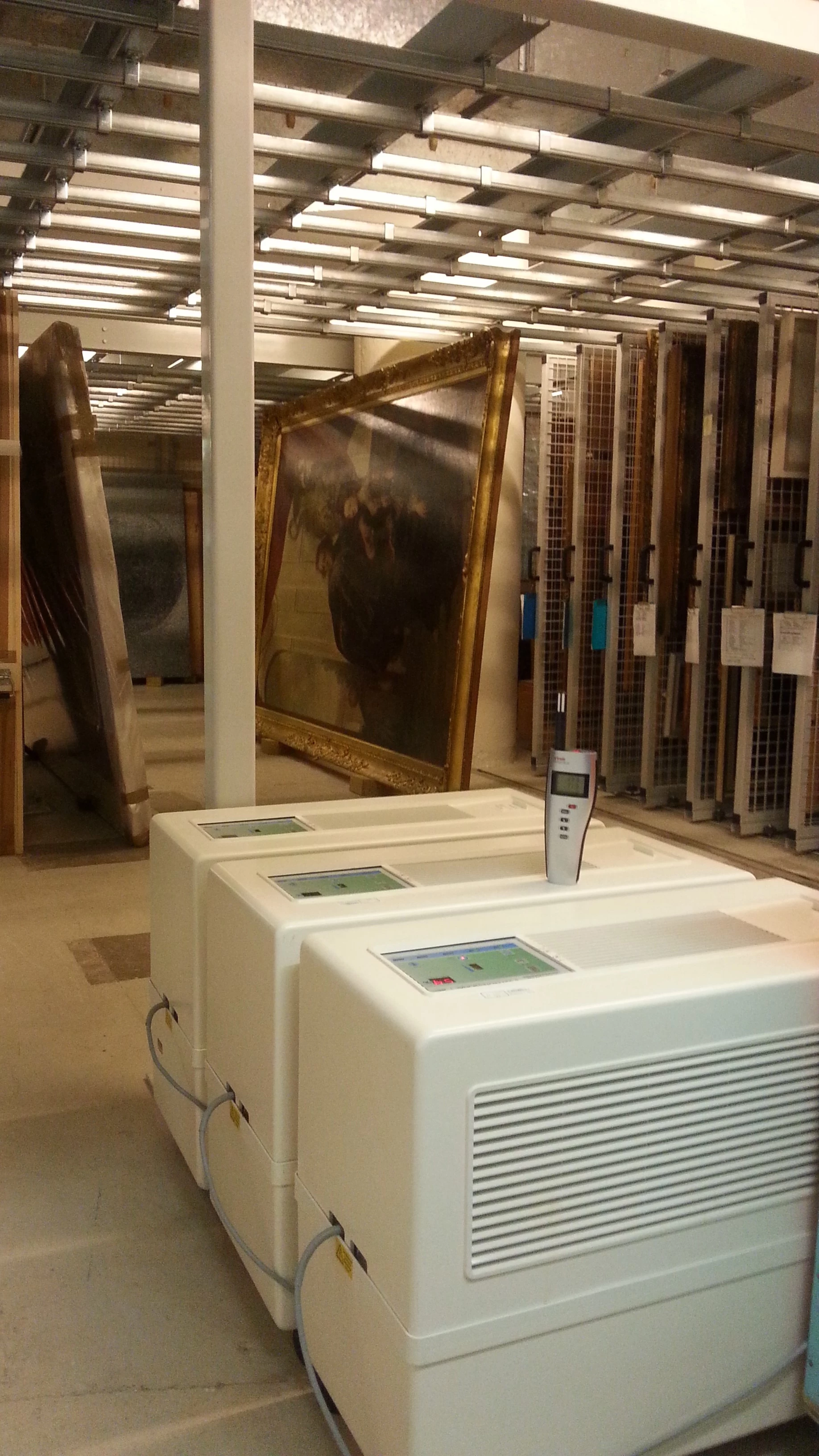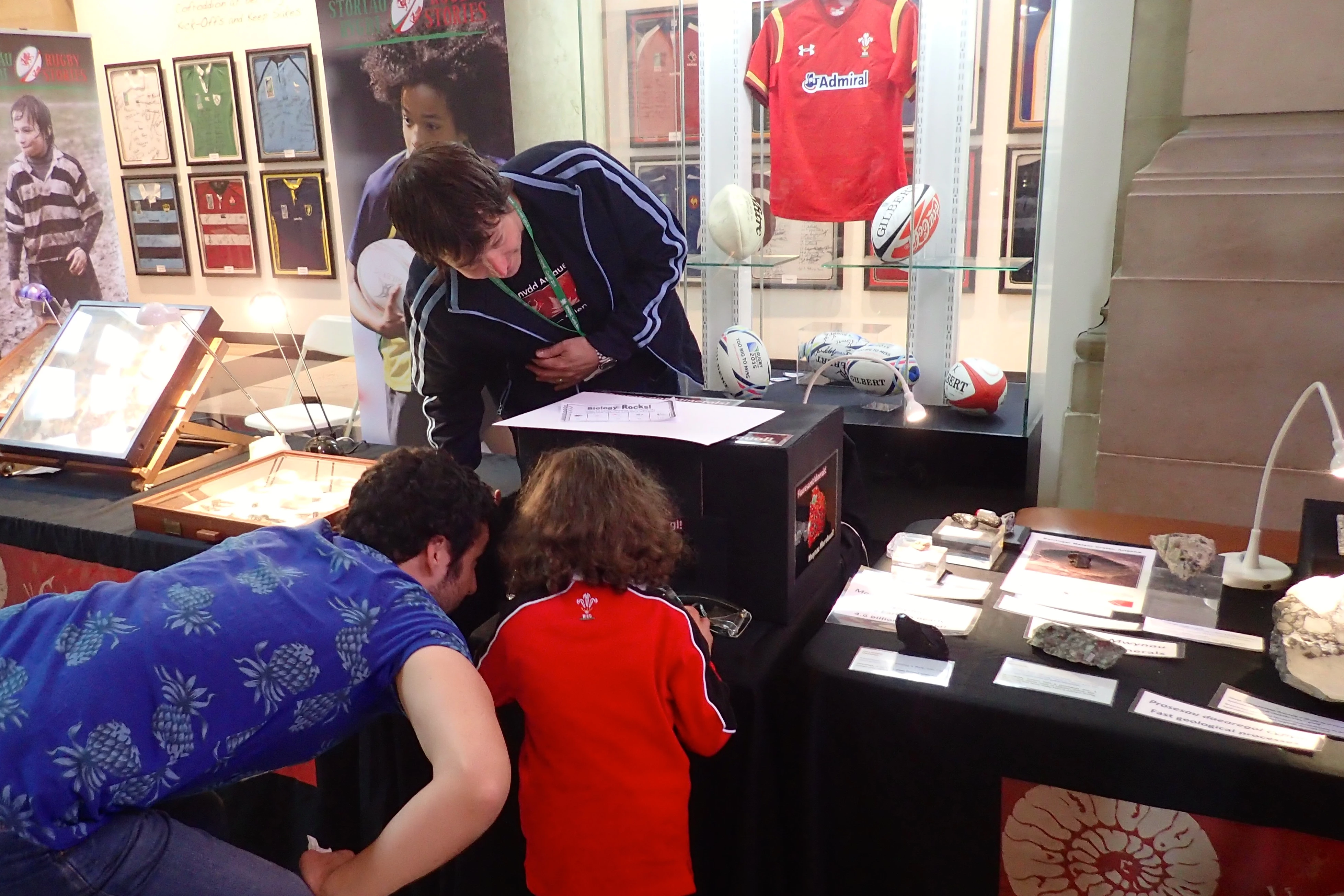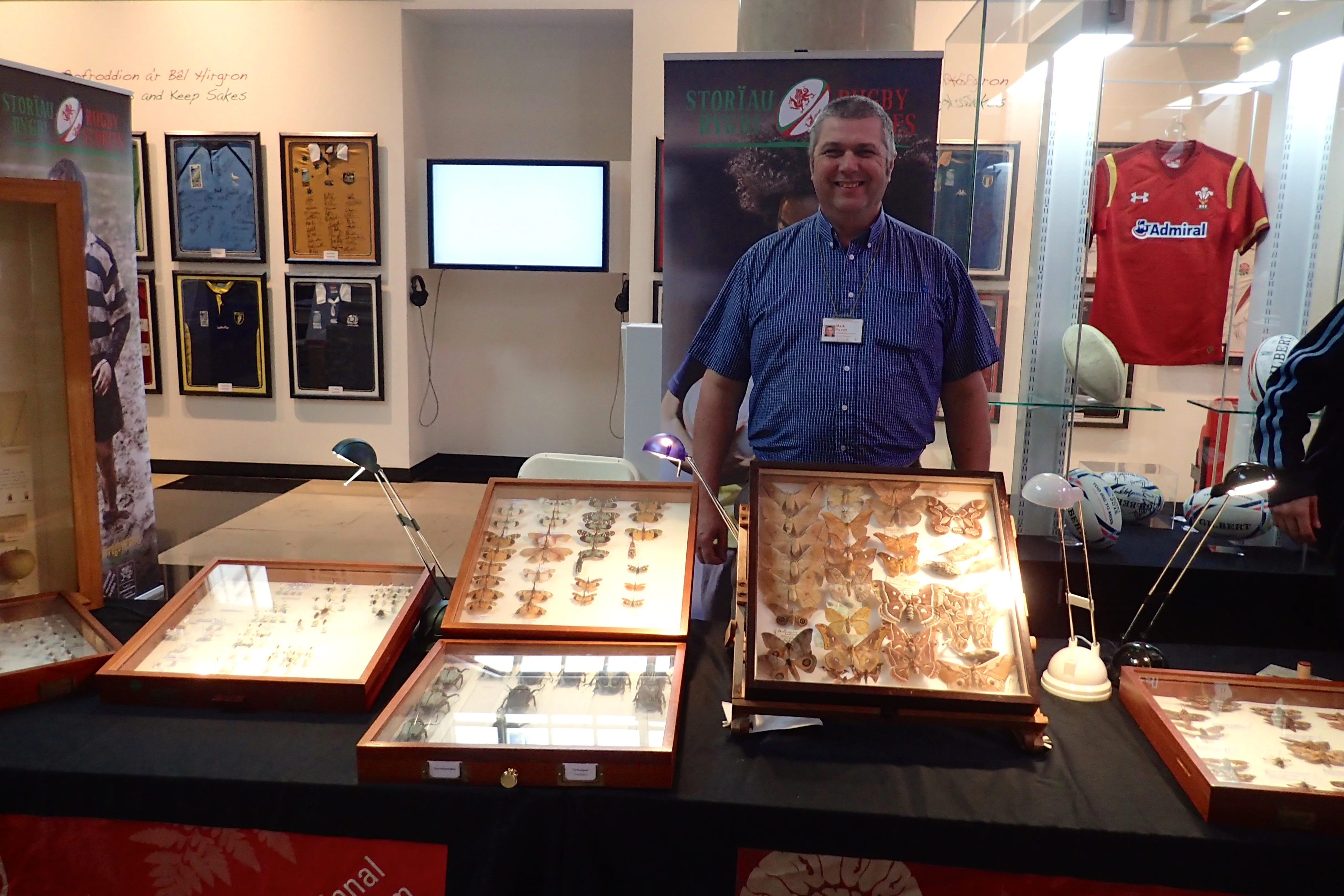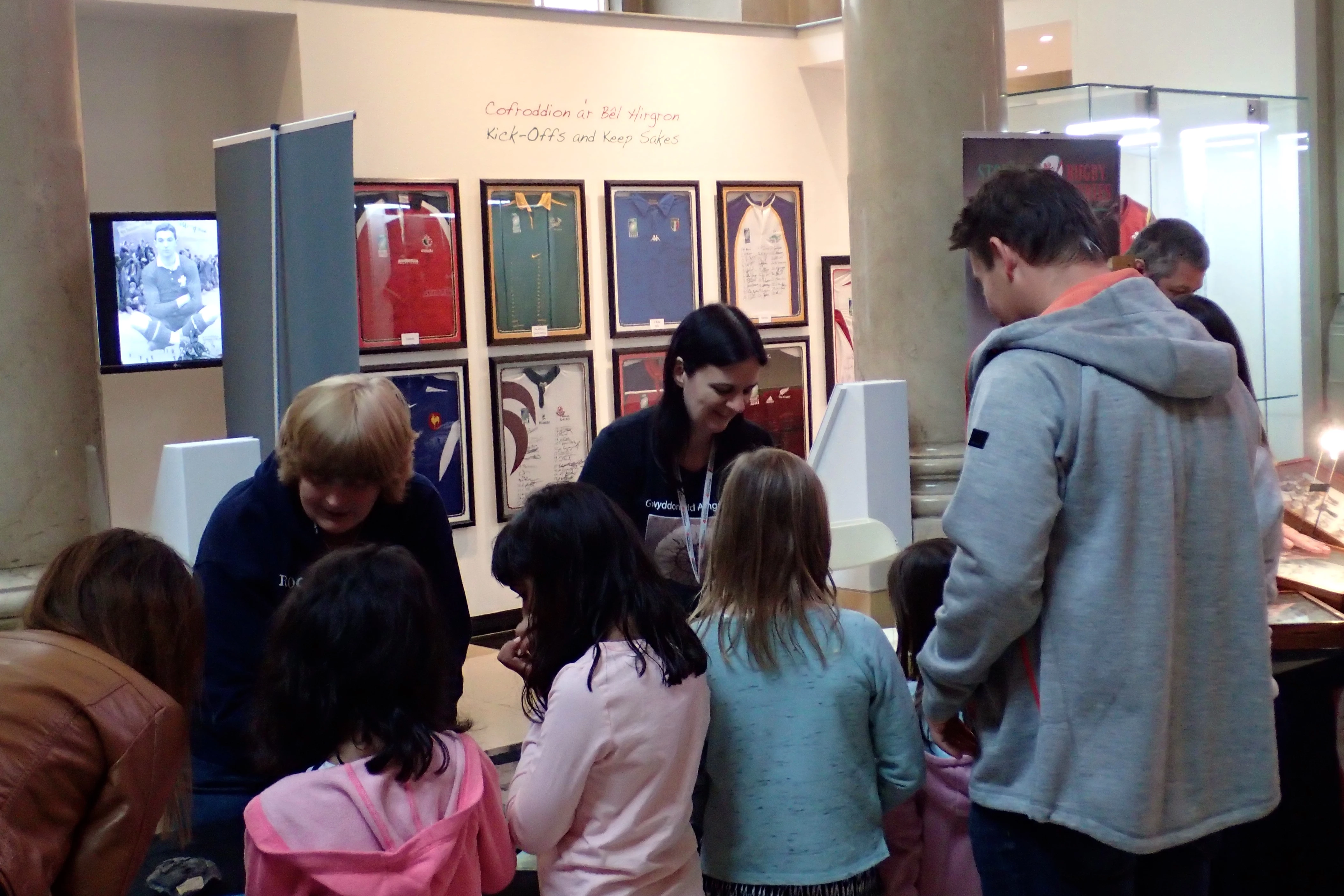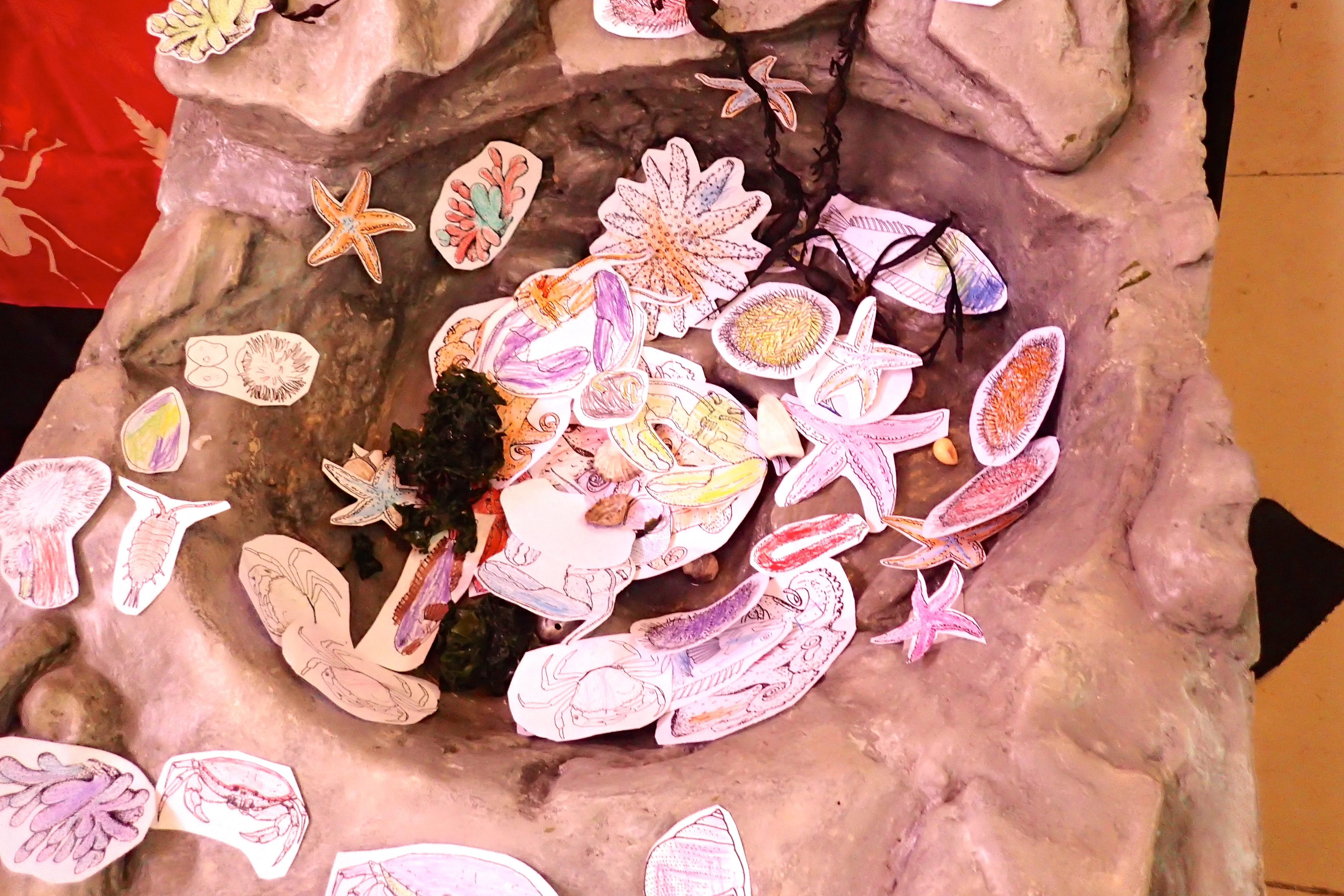What’s in Store at no.32? #museuminahouse
, 6 November 2015
This October Amgueddfa Cymru had the wonderful opportunity to be a part of the Made in Roath community arts festival. Now in its 7th year, the festival celebrates creative talent by taking art out of the gallery and into the wider community, with an emphasis on social engagement and inclusivity.
During the weekend of 17th and 18th October, the Natural Science conservators and curators along with some amazing Made in Roath volunteers, contributed to the festival’s creative extravaganza by installing a pop-up museum in a residential house. The unique setting allowed us to display many of our scientific specimens in a completely different way and also to make great use of our outreach collections.
Our aim was to simply have fun with the specimens, to inspire curiosity and delight for our visitors, and reinforce the idea that museums can be a friendly, relaxed spaces. So that’s just what we did…. by placing a sheep in the kitchen, a giant ancient millipede on the worktop, a crocodile under the stairs and an ostrich skeleton in the bay window. We filled a snooker table full of insects, made blinds from pressed plants and replaced the cups and saucers in the welsh dresser with fossils and minerals. Our curators enjoyed weaving their humour into the displays in subtle ways too. Visitors may have noticed a fox and otter playing a family game together and spelling their names, the spider’s web in the garden with its own paper label and even the specially created 2015.032 accession number with reference to the year of the festival and the door number of the house!
Thanks to everyone’s hard work, the exhibition was a huge success and was amazingly well received by the local community. We have a visitor book full of lovely comments to prove it!
We’d like to say special thanks to the local Roath celebrity, Boyd Clack, who cut the red ribbon and opened the museum for us; the property owners who let us take over their home; and our volunteers who warmly welcomed visitors over the weekend, helping us to bring the museum to life.
We hope that our collaborative work with Made in Roath will grow in the future, so we can find even more creative ways to engage the community with our science collections. Watch this space!
https://storify.com/CardiffCurator/museuminahouse-madeinroath2015
